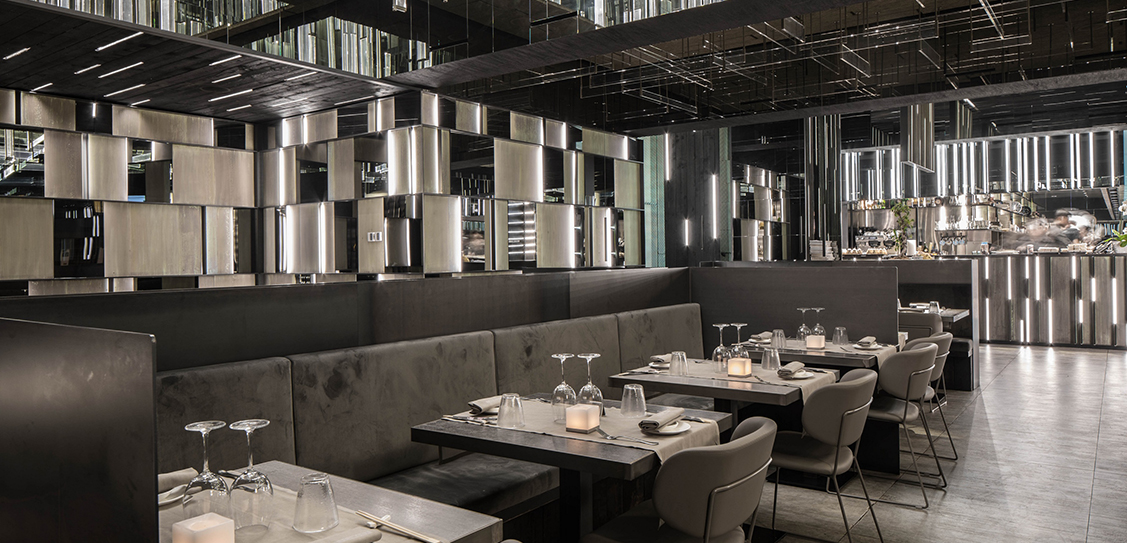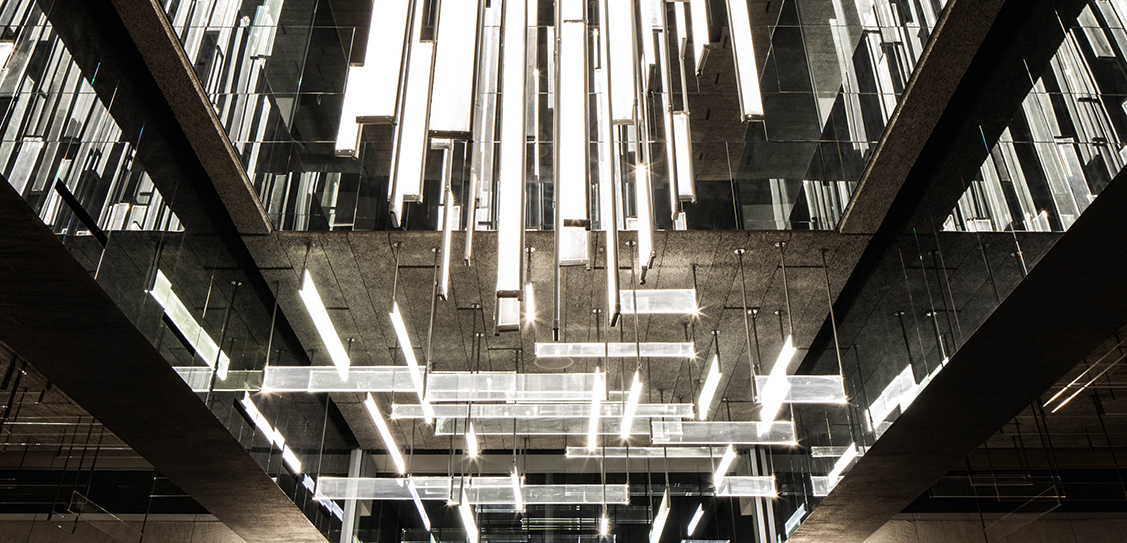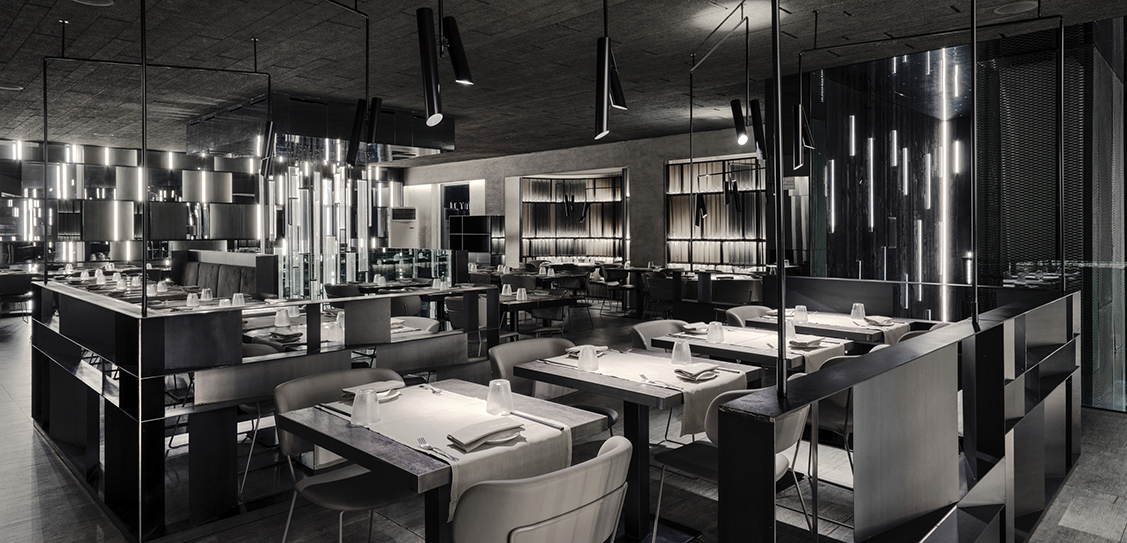The restaurant features a large central light installation, accompanied by light geometries that create a dual effect of depth and dynamism. Ceramics were useful for their composition, their effectiveness of performance as well as for their skillful effect when combined with wood and concrete. Sushi Club was awarded the “La Ceramica e il Progetto” in the commercial category and promoted by Confindustria Ceramica.
The intended design was not to isolate it as just an experience, a generator of shapes and atmospheres, but also as a contribution to the creation of the brand. Sushi Club has revitalised the concept of the Asian gastronomic experience by inserting it into a completely new aesthetic and formal context. It is an exemplary case in the manufacture of "accessible luxury" experiences, through the exclusive originality of the built environment and its atmospheres.
Maurizio Lai conceived the space for the Sushi Club in Cesano Maderno as a real scenographic backdrop, choosing a compositional language that is resolved in the material dialogues, in the design of the volumes and in the diffused lighting that culminates in the large central light installation.
The restaurant is spread over an area of about 1,000 sq m and distributed on two levels. The interiors are characterised by a chromatic continuity that favours warm and dark tones, in contrast to the scenic use of light. On the vertical surfaces, luminous inserts define a precise metric, increased by the ceiling installations and further amplified by the wall mirrors of the main room. The dark and light dichotomy is resolved in elegant, welcoming and refined environments.
On the ground floor, a flexible distribution of the furnishings leaves room for different compositions, while on the upper floor large panoramic windows help to make the atmosphere even more suggestive. The dialogue between materials and light accompanies all the environments, including the stairs and passageways, where the same immersive atmosphere that reigns in the rest of the room is maintained.
The furniture, the luminous bodies and the scenography of the installations are designed by the architect and are handcrafted; every detail becomes a fundamental element of the whole, in a game of references, balances, oppositions and contrasts.
The space is marked by the constant presence of orthogonal luminous installations, which accompany the guest; starting from the entrance, from here you proceed towards the rooms in a theatrical atmosphere defined by thin luminous lines integrated into the walls. At the centre of the space, an installation inserted in the void obtained between the two levels becomes the protagonist of the rooms; the almost full-height sculpture, made with backlit extra light glass blades are embraced by mirrors that amplify its perception in every direction.
Ceramics were specifically chosen, not only for the effectiveness of performance, but also for the ability to contrast the expanded lighting project through compositional and chromatic choices.
The porcelain stoneware floor coverings follow the warm and dark tones of the rooms; both the aged wood effect tiles by Ceramica Sant'Agostino, Blendart Gray collection, which recreate painting superimposed on the wood grain, and the concrete effect tiles by DSG Ceramiche, a division of porcelain stoneware by Decoratori Bassanesi, in the concrete collection, chosen in the large format for the coverings of the staircase and landing areas.



